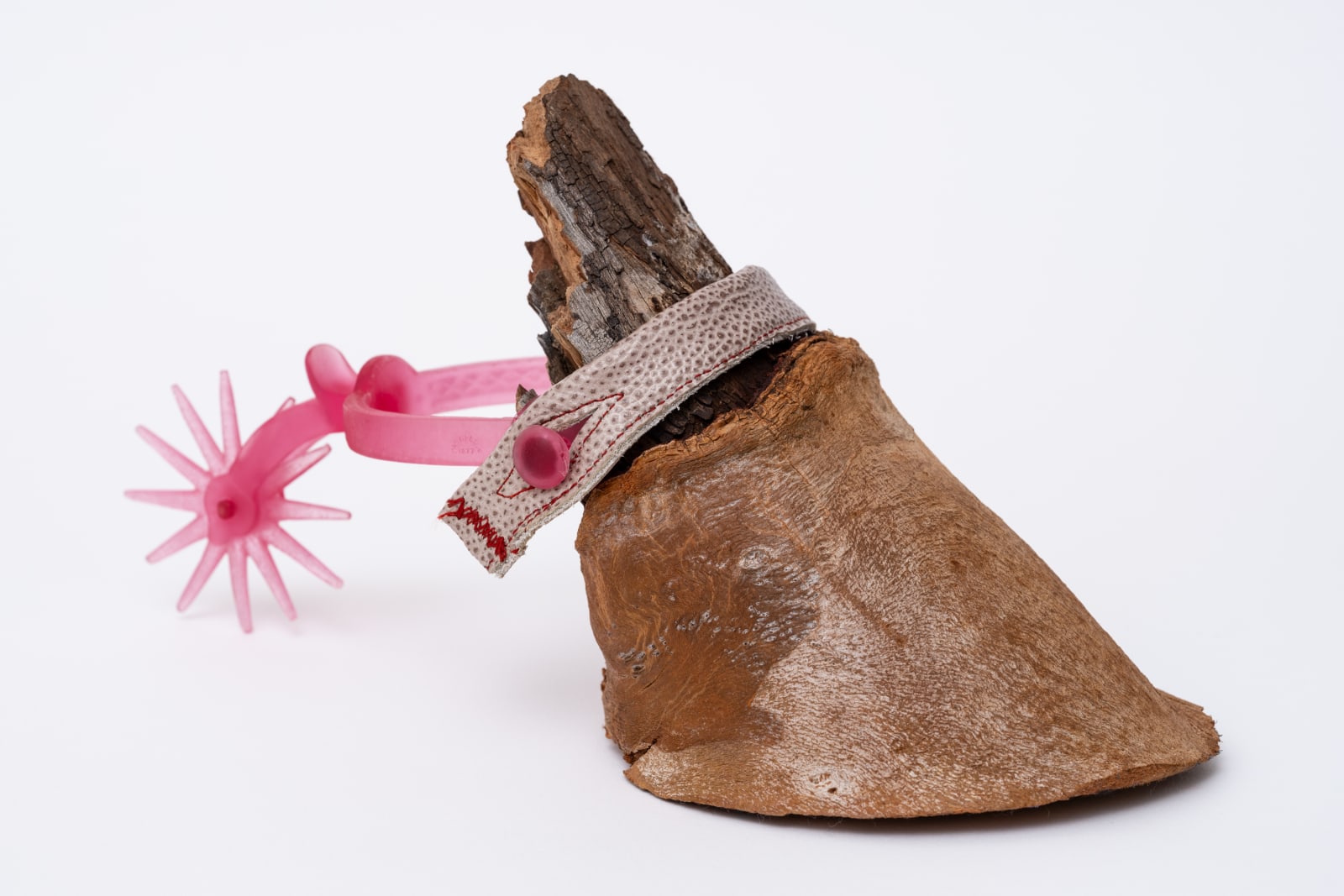
Gray Wielebinski
Hoof and Spur #1, 2021
Wood with cast resin, leather, and cotton
14.9 x 28.7 x 12 cm
5 7/8 x 11 1/4 x 4 3/4 in
5 7/8 x 11 1/4 x 4 3/4 in
Wielebinski explores relationships to animals, particularly our tendency to love them mainly symbolically or through anthropomorphized lenses. Horses are often seen as representative of machismo, cowboys, the possibilities of “going...
Wielebinski explores relationships to animals, particularly our tendency to love them mainly symbolically or through anthropomorphized lenses. Horses are often seen as representative of machismo, cowboys, the possibilities of “going west,” and rugged individualism in American culture. Wielebinski’s uses the motif of the horse to undermine these tropes, manmade interventions of the spur and the horseshoe become reoccurring symbols in the work. The spur most often representing aggression towards nature and a desire to control it, it is both useful and decorative. In 'Hoof and Spur' (2021), Wielebinski contrasts a delicate pink spur cast in resin, reminiscent of a fashion accessory, with a craggy wooden hoof. Complicating traditional narratives, Wielebinski speaks to our obsession with dominating nature, the mundanity and everyday cruelty of American life, and the impulse to repeat the same histories over again.
‘Ultimately, this work is about reckoning with our relationships to the earth and the world around us, to our own mythologies and histories we’ve been taught and perpetuate either through belief or ignorance, the iconographies, statues, and heroes we hold up, the systems we don’t question and have been told are inevitable, and the need to broaden our scope of vision and see beyond ourselves in order to recognize the potential and necessity of working collectively and to greater goods rather than only look out for ourselves, or we are doomed to continue to repeat our same mistakes ad infinitum.’ (Wielebinski, 2021)
‘Ultimately, this work is about reckoning with our relationships to the earth and the world around us, to our own mythologies and histories we’ve been taught and perpetuate either through belief or ignorance, the iconographies, statues, and heroes we hold up, the systems we don’t question and have been told are inevitable, and the need to broaden our scope of vision and see beyond ourselves in order to recognize the potential and necessity of working collectively and to greater goods rather than only look out for ourselves, or we are doomed to continue to repeat our same mistakes ad infinitum.’ (Wielebinski, 2021)